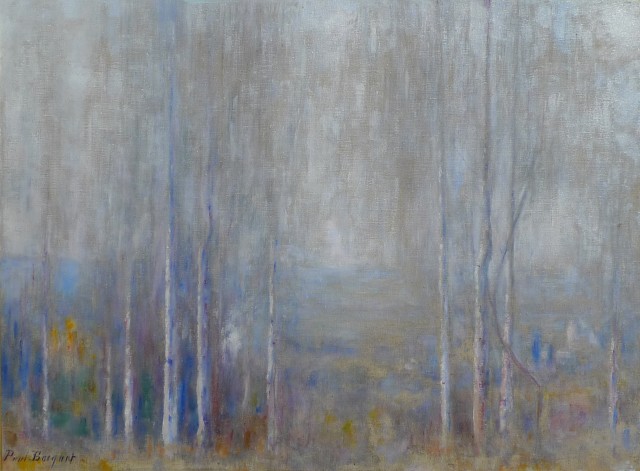Paul Bocquet
1868–1947
Paul Bocquet was born at Reims in 1868. As a student, Bocquet studied at Reims under the portrait painter Jules Collinet and then proceeded to Paris aged about 19 where he studied at the Academy Julian.
Bocquet became involved with religious gatherings in the rue de Rennes, amongst the Brothers of Gachon who adhered to the medieval mysticism of the Rose & the Cross. At the same time, Bocquet discovered the Societe de la Palette, on the Boulevard Berthier, which was directed by the artist Alfred Roll. Roll encouraged his students to paint in an expansive, ethereal and impressionistic manner. It was Roll whosuggested that Bocquet submit his paintings to the Paris Salon where he made his debut in 1892.
After a nine year period of living and working in Paris (with frequent trips to the countryside of Brittany and Champagne) Bocquet settled in Reims where he returned to his favourite landscapes; the banks of the Vesle surrounded by poplars, silver birches and willow trees. Bocquet's warm palette is typified with soft blues, pinks, greens and silvery tones. The compositions of his landscapes are harmonious and show an irreproachable technique which has been likened to Cezanne's landscapes in the first decade of the twentieth century.
During the First World War, Bocquet retired to the forest of Fontainebleu and stayed there until he moved to the Midi in 1928.
A Societaire of the Salon Nationale from 1893, Bocquet exhibited there annually from 1910 to 1939. Four of his works are in the collection of the Museum of Reims; l'hiver dans la montagne de Reims, Le printemps de Lorraine, Temps d'orage, and Tournant de route.
